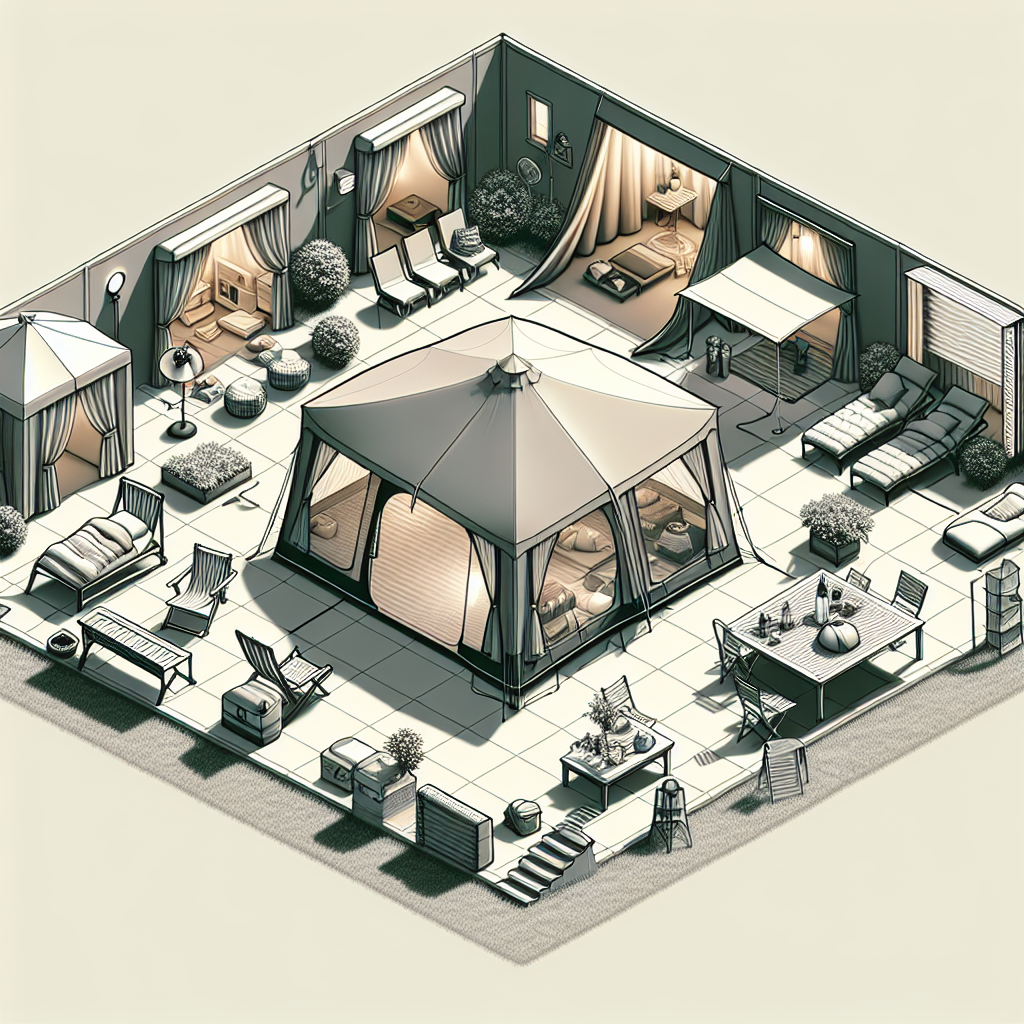How to Maximize Tent Space in Your Backyard
Maximizing tent space in your backyard opens up exciting possibilities for various activities. Whether planning a cozy family camping experience or hosting a festive outdoor gathering, optimizing tent space ensures a more comfortable and efficient use of the area that meets your needs. Understanding how to maximize space can also make your backyard an excellent spot for additional storage or a unique setting for relaxation.
Choosing the Right Tent
Selecting the appropriate tent is crucial for making the most of your backyard space. Begin by considering the Tent Size and Capacity. Determine the necessary size based on who will use it and the purpose it serves. For large gatherings, opt for tents that accommodate more people comfortably. Smaller groups can benefit from compact designs that are easy to handle.
Next, focus on Tent Design and Features that promote space efficiency. Cabin tents, for instance, provide more vertical space compared to dome tents, allowing more room to move around. Analyze the design features that cater to your events, like multiple entry points or additional storage pockets.
When it comes to Material and Durability, opt for fabrics that withstand weather changes while providing a spacious feel. Materials that balance both durability and flexibility ensure long-term usability and comfort, essential for frequent use.
Site Selection and Preparation
Proper site selection sets the foundation for maximizing tent space. Begin by Identifying the Best Spot in the Backyard. Choose a location that is flat, dry, and shaded to ensure a comfortable stay. Avoid placing the tent in low-lying areas prone to waterlogging, especially during the rainy season.
Once the spot is selected, focus on Ground Preparation. Clear any debris, rocks, and uneven patches to create a smooth surface. Leveling the ground not only stabilizes the tent but also prevents discomfort when walking or sleeping inside.
Consider External Enhancements like ground covers or mats beneath the tent. These additions offer extra insulation and comfort, making the interior space feel larger and more accommodating.
Interior Space Optimization
Organizing the tent’s interior is key to space maximization. Strategic Furniture Arrangement can help preserve space. Position sleeping bags, air mattresses, and folding chairs along the tent's perimeter to keep the middle area open. This arrangement allows for easy movement and accessibility.
Look into practical Storage Solutions. Utilize hanging organizers and compact storage bags to declutter the floor space. These solutions keep essential items within reach without compromising space.
Think vertically to Utilize Vertical Space efficiently. Hang lights, fans, and other essentials from the tent’s roof or frame. This strategy frees up floor space and enhances the overall layout.
Multi-Purpose Layouts
Making your tent layout flexible can cater to different occasions. Implement Flexible Layouts for Different Occasions to adapt the space as needed. Arrange the interior to support dining setups, relaxation zones, or dance floors during parties. Change the layout to enhance functionality for various needs.
Use of Dividers and Curtains can help create distinctive zones. Separate areas within the tent to provide privacy or organize sections for different activities. This separation can improve the flow and usability of your tent space.
Additional Accessories
Adding the right accessories can further optimize your tent space. Expandable Awnings and Extensions enhance outdoor living areas by creating additional sheltered sections. These extensions increase your space without adding complexity to the setup.
Select Compact and Foldable Gear to maintain space efficiency. Gear that folds or compacts easily provides versatility without crowding the tent. Look for furniture and equipment designed to save space while still offering functionality.
Seasonal and Weather Considerations
Adapting to different weather conditions ensures maximum tent comfort. When setting up for different seasons, perform Adjustments for Summer vs. Winter. In summer, emphasize ventilation and thermal protection for coolness, while in winter, focus on heat retention strategies.
Implement Weatherproofing Tips to safeguard your tent setup. Choose materials that handle rain, wind, and sun, and use tarps and rainflies for additional protection. Weatherproofing contributes to the longevity and effectiveness of your tent’s space use.
Safety and Maintenance
Ensuring Fire Safety and Ventilation inside the tent is vital. Proper ventilation prevents hazards and maintains air quality, important during events or gatherings. Ensure sufficient airflow to encourage a safe environment.
Regular Maintenance ensures your tent remains spacious and efficient. Clean and inspect the tent and its components after each use to preserve its functionality and extend its life. Maintenance includes checking zippers, tent poles, and fabric for wear and tear.
Conclusion
Maximizing tent space in your backyard offers numerous advantages. By selecting the right tent and preparing the site, you enhance usability and comfort. Optimizing interior layouts and considering seasonal needs guarantee a positive experience. Apply these tips to your backyard adventures and enjoy the benefits of a well-organized tent setup tailored to your specific needs.

